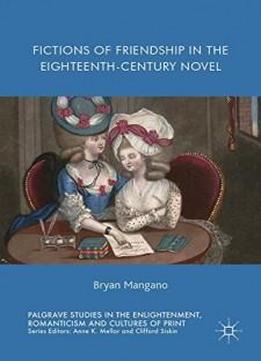
Fictions Of Friendship In The Eighteenth-century Novel (palgrave Studies In The Enlightenment, Romanticism And Cultures Of Print)
by Bryan Mangano /
2017 / English / PDF
7.5 MB Download
This book explores the reciprocal influence of friendship ideals
and narrative forms in eighteenth-century British fiction. It
examines how various novelists, from Samuel Richardson to Mary
Shelley, drew upon classical and early modern conceptions of true
amity as a model of collaborative pedagogy. Analyzing authors,
their professional circumstances, and their audiences, the study
shows how the rhetoric of friendship became a means of paying
deference to the increasing power of readerships, while it also
served as a semi-covert means to persuade resistant readers and
confront aesthetic and moral debates head on. The study contributes
to an understanding of gender roles in the early history of the
novel by disclosing the constant interplay between male and female
models of amity. It demonstrates that this gendered dialogue shaped
the way novelists imagined character interiority, reconciled with
the commercial aspects of writing, and engaged mixed-sex audiences.
This book explores the reciprocal influence of friendship ideals
and narrative forms in eighteenth-century British fiction. It
examines how various novelists, from Samuel Richardson to Mary
Shelley, drew upon classical and early modern conceptions of true
amity as a model of collaborative pedagogy. Analyzing authors,
their professional circumstances, and their audiences, the study
shows how the rhetoric of friendship became a means of paying
deference to the increasing power of readerships, while it also
served as a semi-covert means to persuade resistant readers and
confront aesthetic and moral debates head on. The study contributes
to an understanding of gender roles in the early history of the
novel by disclosing the constant interplay between male and female
models of amity. It demonstrates that this gendered dialogue shaped
the way novelists imagined character interiority, reconciled with
the commercial aspects of writing, and engaged mixed-sex audiences.











